Mulching is a key practice for cultivating a thriving garden, especially in the Central Texas climate. It helps ensure your garden not only survives but flourishes!
Where does mulch come from, and why does it matter? Watch my short video below, and then read on to learn more about the benefits and varieties of mulch for Central Texas landscapes.
Mulch Ado About Nothing?
Why do we even need mulch in Central Texas? Well, mulch provides both form and function for your beds, offering a few benefits.
- Insulation: A sufficient layer of mulch helps protect your plants’ delicate root systems from both hot and cold extremes.
- Water retention: Mulch absorbs moisture and slowly releases it back into the ground. This helps bridge the gaps between rain and watering—especially during long Texas summers!
- Organic matter: As mulch breaks down (typically within a year or so), it returns new organic matter and rich soil to your ecosystem.This releases nutrients like carbon, nitrogen, and phosphorus, which are essential for healthy plant growth. It’s a simple form of fertilizer. The resulting soil is teeming with beneficial microorganisms, which help to improve soil structure and water retention, support robust root development, enhance plant disease resistance
Therefore -> good mulch = good soil = good for your plants.
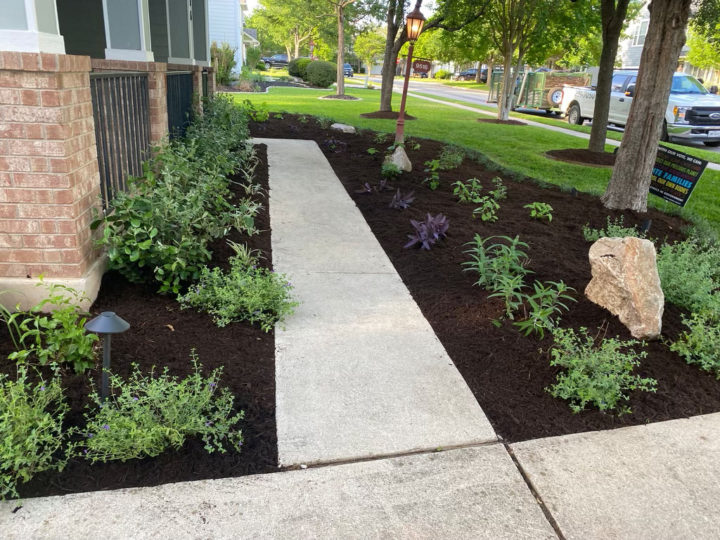
Why We’re Loco for Local
We actually source our mulch locally from a supplier who takes our yard waste, grinds it, ages it, and sells it back to us (what a business model, huh?).
Local mulch is made from local plant materials, which is beneficial because of nerdy things like “native nutrient profile” and “microbial compatibility.” Basically, local mulch has the Lego pieces needed to build the local Lego plants.
You want those native organic compounds from your environment to go back into the soil. Plus, local mulch is also more environmentally friendly since we don’t have to ship it across the country.
Different Kind of Mulch
1. Our Top Choice: Native Hardwood Mulch.
We use double-grind organic native hardwood mulch from Whittlesey Landscape Supplies on almost all of our landscapes.
It’s high-quality and natively sourced, so all those good local nutrients go right back into your soil.
We prefer natural brown mulch, but you can also get a black-dyed variant.
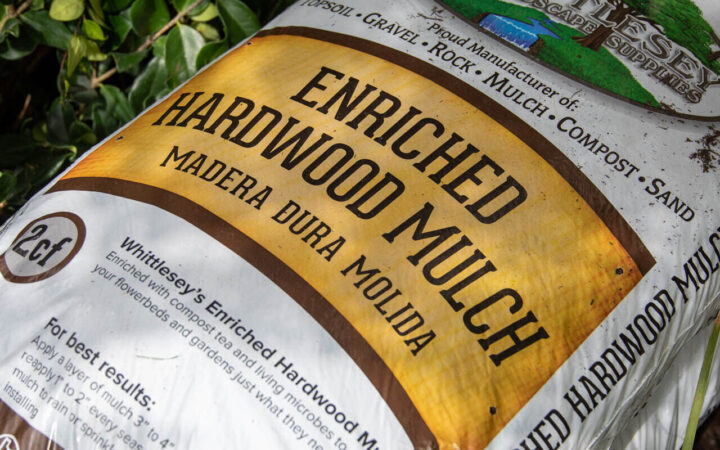
2. Cedar Mulch
Cedar mulch is known for its longevity and insect-repelling properties. We don’t use it too often, but we will put it down in natural areas like native beds and where lawns back up to a green belt.
Cedar mulch is usually only single-grind or shredded. Those bigger pieces decompose more slowly and last longer.
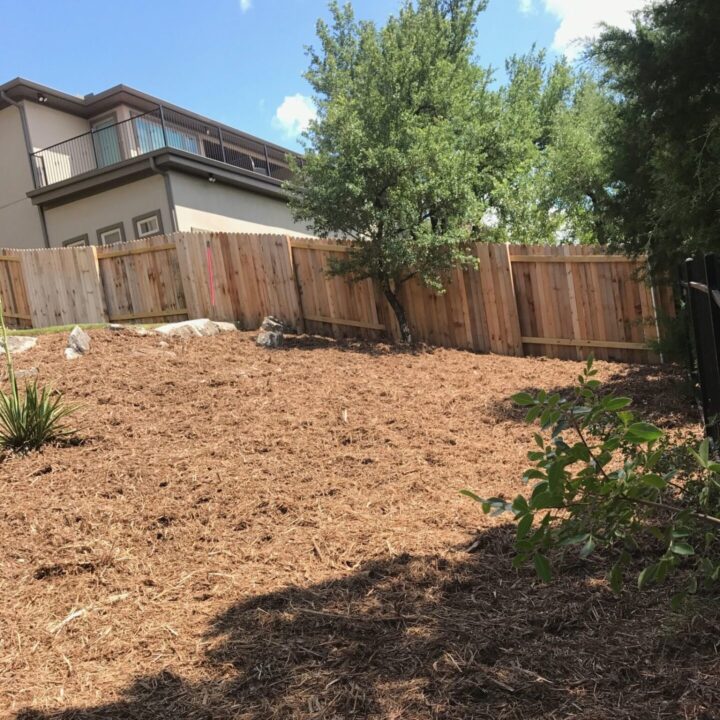
3. Pine Straw Mulch
Pine straw mulch is just what it sounds like, featuring needles and material from pine trees. It’s more popular in the eastern US and more expensive, but a few folks will request it around here.
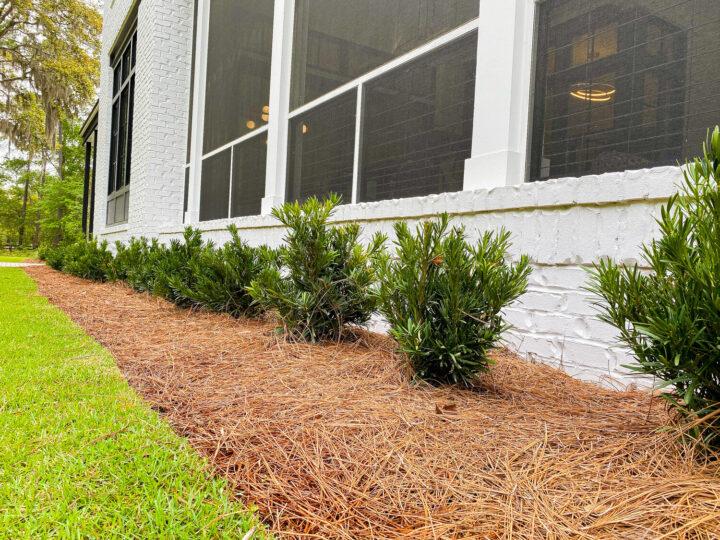
4. Mulch Alternatives: Rock and Gravel
Hey, that’s cheating!
You’re right; it’s not really mulch, but inorganic ground coverings like rock and gravel are a great mulch alternative for many Central Texas applications.
They’re great for decorative purposes, particularly in beds with native succulents and cacti. Rocks also provide good drainage and erosion control—bigger rocks especially won’t wash away as easily.
Keep in mind that rocks can retain heat in the sunny Texas climate and are a bit harder to weed. Rocks are more expensive up-front, but then they’re yours to keep! They don’t require regular topping off or replacement.
It’s good to intermix texture and design, so we often like to mix and match rock and mulch depending on the application and location in the yard. Sometimes we use both at once!
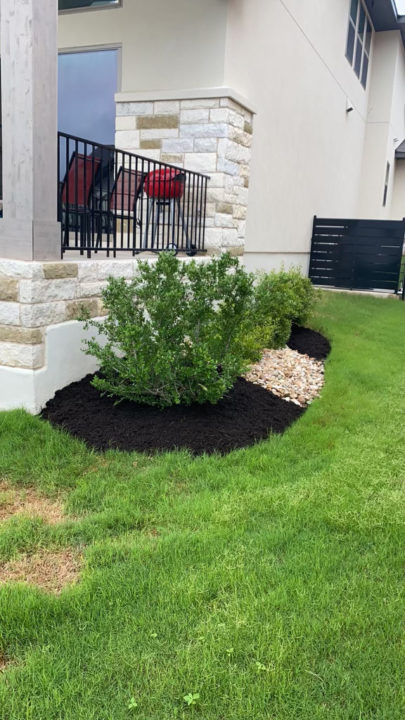
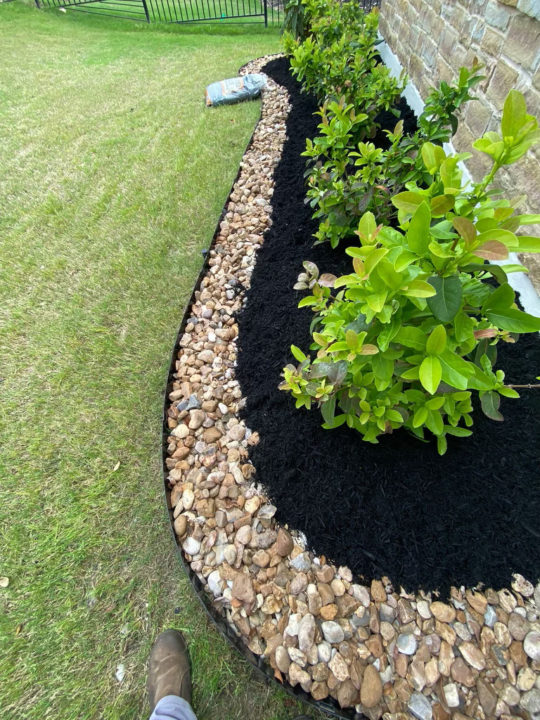
Let’s Get to Mulchin’!
If you need a little help with mulch or bed maintenance, give us a call, and we’ll happily send a mulch crew your way!

